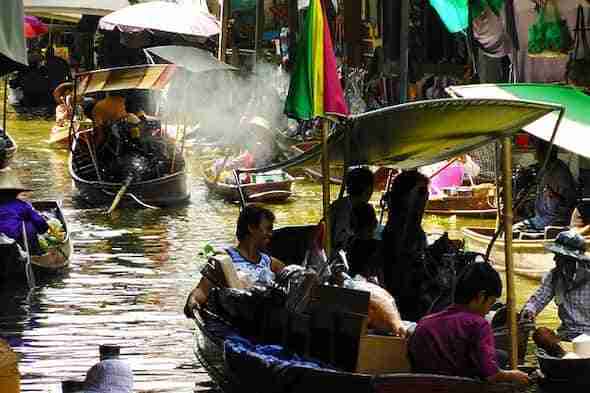When you arrive in Thailand the first thing you do is get the address of your hotel or you want to visit a local landmark or museum. You have to try and figure out how to read the Thai street address and then the Thai street addresses seem to make no sense. So how to read Thai street addresses?
Like any address system around the world, the Thai address system is used to identify a specific location within Thailand. Addresses in Thailand follow a similar pattern as does the majority of countries around the world. The Thai pattern follows the basic pattern of house number and name, road, district, province, and postal code.
In this post, we will go through how to read Thai street addresses. Let’s get started!
Read more on Thailand
- How Can I Avoid ATM Fees in Thailand?
- How Much Does A Beer Cost in Thailand?
- Can You Flush Toilet Paper In Thailand?
- Can You Drink The Water in Thailand?
- Is Vietnam Cheaper Than Thailand?
- What Are The Best Party Islands in Thailand?
- Is Grab Expensive in Phuket Thailand?
How To Read Thai Street Addresses?
Addresses in Thailand follow a similar pattern as the majority of countries around the world. These are examples of Thai addresses.
As you can see from the above addresses, they all follow a standard pattern. This pattern is as follows.
Plot/House number, Village, Road, District, Postal Code District Province, Country
Plot/House Number Village
The house number is the number assigned to the house, apartment, or dwelling. In large towns, cities, or apartment complexes, a named building often plays the role of the village.
Road
This is the hardest part of the Thai addresses to understand as it does not correspond with administrative divisions. This makes understanding of roads and their alleys also known as ‘soi’ can be difficult to understand.
For example ‘Sukhumvit Soi 10’ can have its own numbered sub-sois. So, Soi 10 off Soi 63 off Sukhumvit Rd can be referred to as any of Thanon Ekkamai Soi 10, or Ekkamai Soi 10.
District
Districts are called amphoe, divided into subdistricts called tambon.
Province And Postal Code
The province is followed by the postal code. These postal codes consist of five digits, where the first two digits identify the province, the third digit the district, and the remaining two the subdistrict.

How Many Districts Are There In Thailand?
Thailand’s official national statistical states that In the year 2000, it had 76 provinces, 795 districts, 81 sub-districts, 7,255 tambons, and 69,866 villages.
Is Bangkok A Province?
Thailand has 76 provinces which include Bangkok. Also, Bangkok is the province with the highest population and the capital city.
What Is Moo In Bangkok?
Moo or Muban refers to a village in Thailand. This is a sub-division within that tambon.
What Does Soi In Thai Mean?
Soi is the term used in Thailand for a side street or alleyway that branches off a major street also known as Thanon.
Wrapping Up
Finally, like any address system around the world, the Thai address system is used to identify a specific location within Thailand. Addresses in Thailand follow a similar pattern as the majority of countries around the world. That follows the basic pattern of house number and name, road, district, province, and postal code.
And that’s it for now! I’d love to know if this guide on how to read Thai street addresses has helped you. Let me know if you have any questions and let me know if there is more to add.
Did you enjoy this post? Then don’t forget to pin it!







